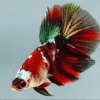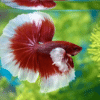To provide the best experiences, we use technologies like cookies to store and/or access device information. Consenting to these technologies will allow us to process data such as browsing behaviour or unique IDs on this site. Not consenting or withdrawing consent, may adversely affect certain features and functions.
The technical storage or access is strictly necessary for the legitimate purpose of enabling the use of a specific service explicitly requested by the subscriber or user, or for the sole purpose of carrying out the transmission of a communication over an electronic communications network.
The technical storage or access is necessary for the legitimate purpose of storing preferences that are not requested by the subscriber or user.
The technical storage or access that is used exclusively for statistical purposes.
The technical storage or access that is used exclusively for anonymous statistical purposes. Without a subpoena, voluntary compliance on the part of your Internet Service Provider, or additional records from a third party, information stored or retrieved for this purpose alone cannot usually be used to identify you.
The technical storage or access is required to create user profiles to send advertising, or to track the user on a website or across several websites for similar marketing purposes.
Assorted Colour Vampire Crab Geosesarma Sp 2-3Cm 2 × £8.71

 Assorted Colour Vampire Crab Geosesarma Sp 2-3Cm
Assorted Colour Vampire Crab Geosesarma Sp 2-3Cm 














Emily Carter (verified owner) –
I recently purchased the Double Tail Randomly Selected Male Splend Beautiful Fish, and I can’t express how thrilled I am! As a passionate aquarium hobbyist, I’ve kept various fish over the years, but this Betta is truly exceptional. The vibrant colors and unique tail shape make him the centerpiece of my aquarium. After about two weeks, he has settled in beautifully and even shows off his stunning fins during feeding time, which is such a joy to witness.
What really impressed me is his temperament; he’s a curious little guy but not overly aggressive, which makes him perfect for my community tank. Compared to other Betta fish I’ve owned, this one has a much more vibrant color palette and a healthier appearance, suggesting he was well-cared for before arriving at my home.
I recommend this Betta to anyone looking to add a striking fish to their setup, especially for beginners who want a low-maintenance yet stunning pet. Just be sure to provide plenty of hiding spots and a tank of at least 5 gallons for their comfort. Overall, purchasing was a breeze, and he arrived healthy and active. I would definitely buy again!
Emily Carter (verified owner) –
I recently purchased the Double Tail Randomly Selected Male Splend Betta Fish, and I couldn’t be happier! As a caring fish parent, I prioritize the health and happiness of my aquatic pets, and this betta has brought so much joy to my home. After just two weeks of settling in, he is vibrant, active, and truly stunning to watch. His colors are even more brilliant than I expected!
I’ve kept various tropical fish, but this betta stands out not just for his looks, but for his calm temperament, making him a perfect addition to my community tank. He interacts well with my other fish without showing aggression, which was a concern I had at first. The shipping was super fast, and he arrived healthy and ready to explore his new environment.
One small note: I did notice he prefers hiding spots, so providing plenty of plants and decorations really enhances his comfort. I highly recommend this to beginners looking to create a thriving aquatic community. You won’t regret adding this beautiful betta to your tank!
Emily Parker (verified owner) –
I recently purchased the STUNNING Double Tail Male Splend Betta, and I am beyond thrilled with my new addition! After a week of acclimating him to my community tank, I can confidently say that he has brought so much vibrancy and life to my aquarium. His colors are absolutely mesmerizing, and he interacts wonderfully with my other tropical fish, showing that he really is an ideal choice for beginners like me. I’ve had bettas before, but this one’s double tail is just stunning!
One thing I appreciate is how easy he is to care for. I ensure he has a clean environment, and he swims around happily, often flaring his fins, displaying his fantastic personality. My only minor concern is that he tends to get a bit skittish during water changes, but that’s pretty normal for bettas.
If you’re looking to enrich your aquarium with a truly beautiful fish, I highly recommend this betta. He’s perfect for anyone who wants to create a thriving aquatic community. I can’t wait to see how he continues to flourish in my tank! Overall, a wonderful purchase!
Emily Carter (verified owner) –
I recently purchased the Stunning Double Tail Male Betta, and I couldn’t be happier! After just two weeks, he has settled beautifully into my 10-gallon tank. His colors are absolutely mesmerizing, displaying vibrant blues and reds that light up the entire aquarium. I had been a bit worried about compatibility with my community tank, but he’s been surprisingly peaceful, adding charm without any aggression. This betta fish is easy to care for, making it perfect for anyone starting their aquatic journey.
What sets this betta apart from others I’ve owned is his stunning tail – it’s like a living piece of art! I do recommend ensuring he has plenty of hiding spots as bettas can be shy. My only minor concern is that he tends to be a bit picky about his food, but that’s a common trait with bettas. Overall, I’ve found this fish to be an excellent choice for beginners and experienced aquarists alike. If you’re looking to enrich your aquarium with a gorgeous betta fish, this is the one to get! He’s a true delight in my aquatic community.